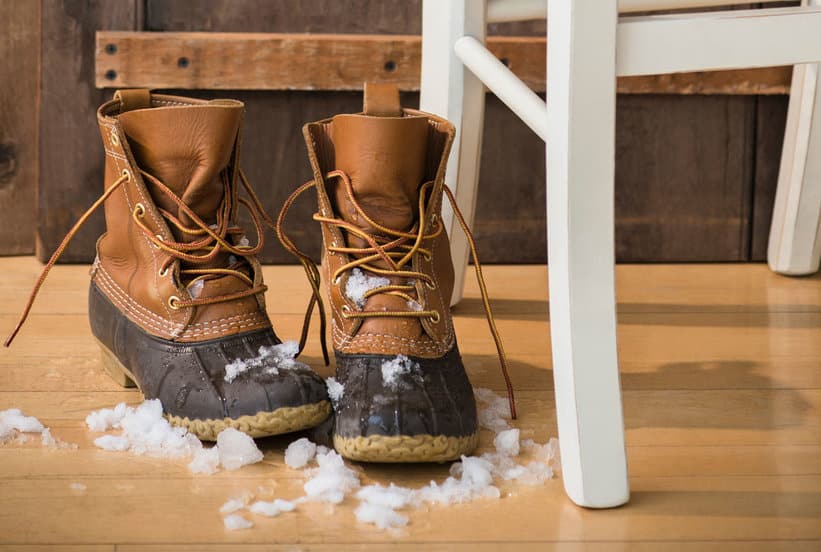Hardwood is a classic flooring material that’s coveted by many homeowners. But that doesn’t mean it doesn’t come without its downsides. One of the problems with hardwood floors is that they can become very slippery – especially if they get wet due to a bit of melting snow or some tracked-in rain. In this post, we provide some tips for making hardwood flooring less slippery in the winter.
Provide Doormats
Moisture tends to accumulate around the doors because of people coming into the house without wiping their feet. If you provide a doormat, much of this excess moisture can be avoided. Providing two doormats, one outside and one inside, will give you and your guests a couple of opportunities to wipe your feet as you enter the house. This will reduce the amount of moisture around the doorway and help with making your hardwood flooring less slippery in the winter.
Sweep Regularly
A fine coating of dust on an otherwise clean hardwood floor can make it more slippery than usual. Regular sweeping will get rid of any dust tracked into the house. It’s important to remember that the winter season will increase the amount of dirt and dust brought into the house, so you may find it necessary to up your sweeping game in the colder months.
Apply An Anti-Slip Coating
Sometimes all the cleaning and sweeping in the world will not stop your hardwood floors from being slippery in the winter. This is where an anti-slip coating might come in handy. Many different types of anti-slip coating can be used on both indoor and outdoor hardwood flooring. Many are safe and comfortable for barefoot use as well as sensitive pet paws. You can also choose between clear or coloured patinas depending on your aesthetic preferences.
Strategically Place Some Rugs
If you find certain spots of your hardwood floors become more dangerous than others in the winter, consider laying down some strategically placed rugs. Placing some rugs with non-slip backing can provide the necessary traction to reduce the chances of slipping in problematic areas. If you find the problem is seasonal, it’s simple enough to remove the rugs once the weather changes.

